#d1d1c0 Color Information
In a RGB color space, hex #d1d1c0 is composed of 82% red, 82% green and 75.3% blue. Whereas in a CMYK color space, it is composed of 0% cyan, 0% magenta, 8.1% yellow and 18% black. It has a hue angle of 60 degrees, a saturation of 15.6% and a lightness of 78.6%. #d1d1c0 color hex could be obtained by blending #ffffff with #a3a381. Closest websafe color is: #cccccc.
-
- R 82
- G 82
- B 75
-
- C 0
- M 0
- Y 8
- K 18
● #d1d1c0 color description : Grayish yellow.
#d1d1c0 Color Conversion
The hexadecimal color #d1d1c0 has RGB values of R:209, G:209, B:192 and CMYK values of C:0, M:0, Y:0.08, K:0.18. Its decimal value is 13750720.
| Hex triplet | d1d1c0 | #d1d1c0 |
|---|---|---|
| RGB Decimal | 209, 209, 192 | rgb(209,209,192) |
| RGB Percent | 82, 82, 75.3 | rgb(82%,82%,75.3%) |
| CMYK | 0, 0, 8, 18 | |
| HSL | 60°, 15.6, 78.6 | hsl(60,15.6%,78.6%) |
| HSV (or HSB) | 60°, 8.1, 82 | |
| Web Safe | cccccc | #cccccc |
| CIE-LAB | 83.422, -2.971, 8.429 |
|---|---|
| XYZ | 58.608, 62.962, 58.932 |
| xyY | 0.325, 0.349, 62.962 |
| CIE-LCH | 83.422, 8.937, 109.416 |
| CIE-LUV | 83.422, 0.931, 12.96 |
| Hunter-Lab | 79.349, -7.018, 11.51 |
| Binary | 11010001, 11010001, 11000000 |
Color Schemes with #d1d1c0
Alternatives to #d1d1c0
Below, you can see some colors close to #d1d1c0. Having a set of related colors can be useful if you need an inspirational alternative to your original color choice.
#d1d1c0 Preview
This text has a font color of #d1d1c0.
<span style="color:#d1d1c0;">Text here</span>This paragraph has a background color of #d1d1c0.
<p style="background-color:#d1d1c0;">Content here</p>This element has a border color of #d1d1c0.
<div style="border:1px solid #d1d1c0;">Content here</div>.text {color:#d1d1c0;}.background {background-color:#d1d1c0;}.border {border:1px solid #d1d1c0;}Shades and Tints of #d1d1c0
A shade is achieved by adding black to any pure hue, while a tint is created by mixing white to any pure color. In this example, #050504 is the darkest color, while #fafaf9 is the lightest one.
-
#050504
#050504rgb(5,5,4) -
#10100c
#10100crgb(16,16,12) -
#1c1c14
#1c1c14rgb(28,28,20) -
#27271d
#27271drgb(39,39,29) -
#323225
#323225rgb(50,50,37) -
#3e3e2d
#3e3e2drgb(62,62,45) -
#494935
#494935rgb(73,73,53) -
#54543e
#54543ergb(84,84,62) -
#606046
#606046rgb(96,96,70) -
#6b6b4e
#6b6b4ergb(107,107,78) -
#767656
#767656rgb(118,118,86) -
#82825f
#82825frgb(130,130,95) -
#8d8d67
#8d8d67rgb(141,141,103)
-
#979771
#979771rgb(151,151,113) -
#9f9f7c
#9f9f7crgb(159,159,124) -
#a8a887
#a8a887rgb(168,168,135) -
#b0b093
#b0b093rgb(176,176,147) -
#b8b89e
#b8b89ergb(184,184,158) -
#c0c0a9
#c0c0a9rgb(192,192,169) -
#c9c9b5
#c9c9b5rgb(201,201,181) -
#d1d1c0
#d1d1c0rgb(209,209,192) -
#d9d9cb
#d9d9cbrgb(217,217,203) -
#e2e2d7
#e2e2d7rgb(226,226,215) -
#eaeae2
#eaeae2rgb(234,234,226) -
#f2f2ed
#f2f2edrgb(242,242,237) -
#fafaf9
#fafaf9rgb(250,250,249)
Tones of #d1d1c0
A tone is produced by adding gray to any pure hue. In this case, #c9c9c8 is the less saturated color, while #fbfb96 is the most saturated one.
-
#c9c9c8
#c9c9c8rgb(201,201,200) -
#cdcdc4
#cdcdc4rgb(205,205,196) -
#d1d1c0
#d1d1c0rgb(209,209,192) -
#d5d5bc
#d5d5bcrgb(213,213,188) -
#d9d9b8
#d9d9b8rgb(217,217,184) -
#dedeb3
#dedeb3rgb(222,222,179) -
#e2e2af
#e2e2afrgb(226,226,175) -
#e6e6ab
#e6e6abrgb(230,230,171) -
#eaeaa7
#eaeaa7rgb(234,234,167) -
#eeeea3
#eeeea3rgb(238,238,163) -
#f3f39e
#f3f39ergb(243,243,158) -
#f7f79a
#f7f79argb(247,247,154) -
#fbfb96
#fbfb96rgb(251,251,150)
Color Blindness Simulator
Below, you can see how #d1d1c0 is perceived by people affected by a color vision deficiency. This can be useful if you need to ensure your color combinations are accessible to color-blind users.
